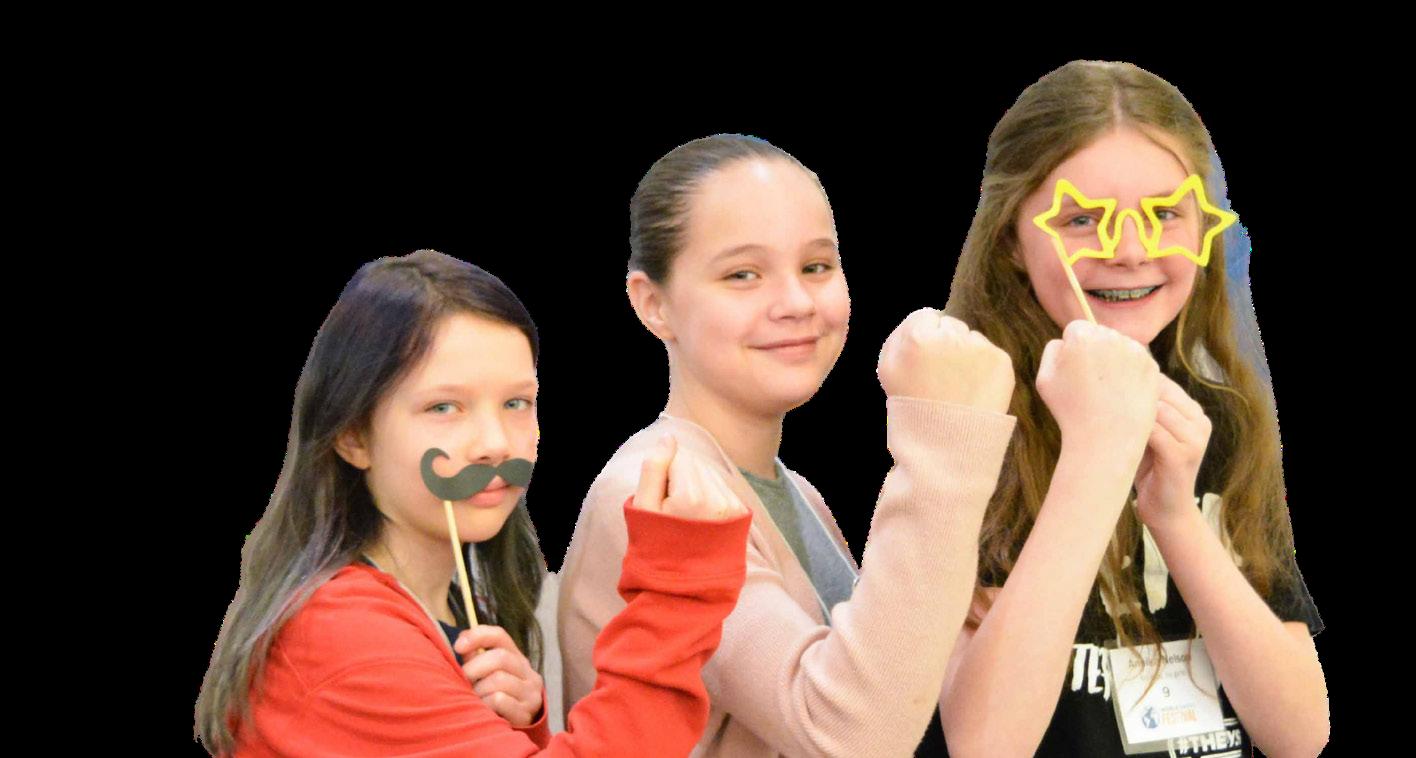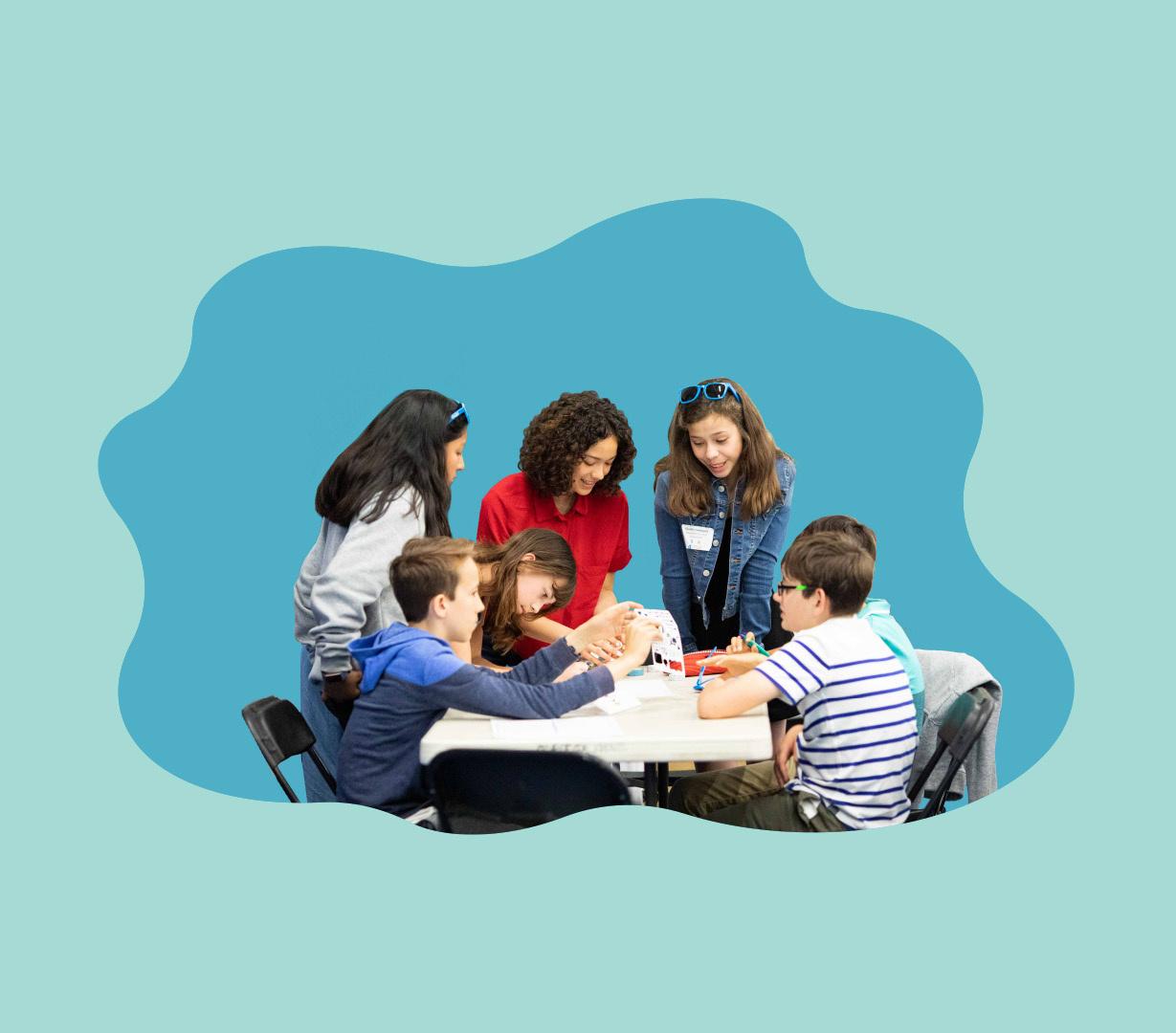We must imagine.





Our current education system in the United States was designed in the Industrial Revolution a dramatically different time. Today, it is outdated and irrelevant in an increasingly diverse and globally connected world that is rapidly changing The status quo in education is not adequately preparing students for a global 21st century at best and at worst, it is producing inequitable outcomes for a growing population of students of color.
According to the U.S. Department of Education’s most recent data, the high school graduation rate, which links directly to relevancy and engagement, was 89% for white students, but only 79% for Black students and 74% for American Indian/ Alaska Native students.
The World Economic Forum’s 2020 report on the “Future of Jobs” detailed the most critical skills for the future workforce precisely the skills developed in World Savvy’s programs: critical thinking, problem solving, flexibility, adaptability, comfort with ambiguity, and collaboration that will position students for success in our everchanging global economy Today’s global economy is redefining traditional workplace readiness, requiring new global competencies that are replacing the old paradigm.
Preparing students today for a global knowledge economy is critical, when an estimated 85% of grade-schoolers will hold jobs that do not yet exist. 1

In our traditional education model, content is prioritized over competencies, putting young people at a disadvantage to learn how to navigate this changing workforce landscape. A model centered around global competence ensures that all graduates are ready for the workforce of the future - the known and unknown.
Demographic shifts are changing the shape and face of communities across the country, which means that skills for cross-cultural
1 (Dell Technologies, “The next era of human|machine partnerships,” https://wwwdelltechnologiescom/content/dam/delltechnologies/ assets/perspectives/2030/pdf/SR1940 IFTFforDellTechnologies Human-Machine 070517 readerhigh-respdf, accessed June 2022)

communication and collaboration are critical to civic engagement, now and in the future 2020 marked the first year where more than half of children identified as people of color Even rural communities are experiencing these changes intensely.
The 2020 U.S. Census found that nearly all of our country’s population growth in the first two decades of the 21st century was composed of minorities and estimates by 2045 there will be no ethnic or racial majority
By 2030, more than half of young workers will be people of color This demographic shift is a huge opportunity for our nation, as diversity is linked to economic prosperity, greater scientific prowess, and fairer judicial processes. In addition, research shows that being around people different from us makes us more creative, more diligent, and harder-working
Our country and our communities are changing, and for many people, this change evokes skepticism or even fear. It is crucial for engaged citizenship, to steward the future of our democracy, that students begin very early on to understand and develop the competencies needed to thrive in this multiethnic democracy.
K-12 education has historically been oriented toward fixed right and wrong answers, but we

now know this is contradictory to authentic student engagement and success, as well as to the development of the knowledge, skills, values and dispositions students need to be leaders in their local and global communities.
Current technology is also shifting the role of educators and schools Youth growing up today have access to the entirety of human knowledge at their fingertips, receive news in an endless 24-hour cycle, and interact via social media with people and content across the globe
Educators’ work should no longer focus on delivering information, but on preparing students with the skills to successfully navigate and process information delivered via technology.
Future success in addressing our world’s biggest challenges will come from being able to filter the onslaught of information technology allows, to think deeply about complex problems and design solutions, and to look at issues from multiple perspectives
As we contemplate the pandemics our country and globe are impacted by so acutely, we know that our education system must center youth agency, empower diverse young leaders to become impactful changemakers, and re-imagine K-12 teaching and learning to build the competencies for engaged citizenship – locally and globally.
In order to teach for global competence, educators need support to teach in ways they did not learn, while engaging students from communities they are not native to.
More than 80% of K-12 educators are white and teach in classrooms where more than half of students identify as black, Indigenous, and people of color.
World Savvy is committed to re-imagining education—changing how students engage with their communities and the world through global competence education.
World Savvy’s model not only makes our education system more equitable, but also fosters the resilience, self-efficacy and agency for young people to build healthy relationships creating better communicators, collaborators and changemakers and as a result, better global citizens
Student engagement is directly linked to relevancy; when students believe a learning experience is important and reflects their own culture, interests, and experiences, they are more likely to stay involved A recent study by the Stanford University Graduate School of Education showed that culturally relevant pedagogy significantly boosted the attendance (by 21%) and GPA (by 1.4 grade points) of at-risk high school students in one pilot program in San Francisco
By exploring global issues in the classroom and allowing students to drive their own learning, educators can connect students’ personal experiences to the content.
This allows their
backgrounds and experiences to be seen as assets instead of barriers to learning; as a result, students acquire the kind of knowledge, skills and dispositions that not only improve academic performance, but also prepare them for life in a global society.
Learners benefit from teaching that relates subject matter to personal identity and experiences pedagogy that is culturally responsive, student-led, and project based benefits all students and increases student engagement across all demographics, but especially for students from historically marginalized populations
(BrookeDonald,“Stanfordstudysuggestsacademicbenefitstoethnicstudiescourse,”http://newsstanfordedu/2016/01/12/ethnicstudies-benefits-011216/,(January12,2016)) *WorldSavvystrivestoutilizeasset-basedlanguage,andthereforedoesnotendorsetheuse of“at-risk”todescribeanyofourstudents However,inthisinstance,languagehasbeentakendirectlyfromareport,soinordertostay truetothestudy’sfindings,wehaveretainedtheoriginallanguageinthisreference
(“Teaching for Equity: The CLEAR Paradigm,” Diep Nguyen and Nancy Commins, Wisconsin Center for Education Research, May 2020)

The education system is a foundational experience for all children, and can be leveraged as a way to help communities not only embrace change, but also develop students into future changemakers These formative experiences how we learn about ourselves, our communities, and the world around us impact so many critical developmental milestones that are key to more inclusive, cohesive societies
World Savvy is committed to re-imagining education changing how students engage with their communities and the world by embedding global competence education more deeply at all levels Our Global Competence Matrix (see addendum) outlines the relevant indicators we measure, including: valuing multiple perspectives, comfort with ambiguity, empathy, questioning prevailing assumptions, engaging in inclusive dialogue, collaborative problem solving, and more.
As a result of World Savvy’s partnerships with schools, World Savvy students:
Know More: They engage in inquiry and informed, critical thinking about complex and interconnected issues

Care More: They feel a personal and collective responsibility to address inequity, champion sustainability, and create understanding and inclusion.
Do More: They take informed action on issues that matter and intentionally reach across differences to learn, collaborate, d k ll i l f h

“I’m a 13-year-old writing business emails, so that’s pretty cool And it’s pretty cool that we get to bring our vision to life and that we get to do this”
- For Girls by Girls, Minneapolis, MN
Since 2002, World Savvy has supported a generation of engaged global citizens, preparing them to thrive today and shape tomorrow’s world World Savvy’s work in K-12 schools provides them the preparation, the platform and the opportunities to critically analyze complex local and global issues and, ultimately, engage in informed action in their communities and beyond.


94% of students were more open to new ways of thinking.
84% of students learned how to create a plan to make change on a global issue.


90% of students used research to adapt a solution.
94% of students became more knowledgeable of the complexities and interdependence of world events and issues.


89% of educators increased their capacity to explore and nurture connections across identities
89% of educators increased their capacity to provide opportunities to research global and local challenges and potential solutions, facilitate action focused learning.

Nationally, we’ve reached more than 904,000 students and nearly 7,300 educators across 45 US states and 32 countries with similarly powerful impact: more than 90% of students are significantly enhancing their global competence.


Core Region States Reached


“When I think about the teaching and learning that takes place in the classroom through the support of World Savvy – I can’t think of anything that’s more important than that. We need more engaged world citizens and community citizens - we want them to be aware and to take action.”
- Mary Lynn Bryan World Savvy Educator
After 21 years of successfully developing and implementing high impact programs, we are ready to significantly scale this model nationally - helping our schools, our communities, and our country re-imagine an education system that prepares all students for our fast-changing, interconnected world.

The need to imagine something different has never been more urgent. We will leverage the learning and impact in this network of schools to change the discourse nationally on what constitutes a ‘quality’ education We are creating a future-ready K-12 system that deeply and equitably prepares young people for life as engaged citizens, thriving professionals, and global problem solvers.
By 2035, World Savvy’s goal is to engage a network of 10,000 K-12 schools in diverse geographies across the U.S., reaching an estimated 5 million students.

To continue our learning and leadership in the field of global competence in education, we will deepen partnerships with subject matter experts, K-12 school leaders, educators and students, and policymakers across the globe.

To further embed Our Global Competence Certificate into practice, we will build out a network of higher education partners and researchers, and position them to champion reform in teacher preparation


To expand our geographic and
To shift the discourse on what const education in the U S , we will inve deepening our research and evalua pathways to embed our model in non-traditional
When World Savvy started in 2002, conversations around whole-child models, social-emotional learning, and global competence were few and far between in both the national education space as well as within philanthropy However, in recent years, the importance of these practices is being recognized more and more, with more demand for quality programming to integrate them into schools

While the past few years have been ones of unprecedented disruption and hardship, they have also presented opportunities to reimagine our programming in ways that make it more
accessible to partners across geographies at a time when there is more demand for this work than ever before.
The We Must Imagine Campaign will build the infrastructure and support for significant growth over the next decade - building a movement across sectors and stakeholders to re-imagine education for a diverse and interconnected world This is a five year campaign engaging our community in building the future of this work.
Raise $26.5M from donors and philanthropic partners to invest in the infrastructure, staffing, and collaborative work to drive program expansion
Increase earned revenue from 10% to 50%+ of total revenue by 2026, to position the organization for sustainable growth
“It’s past time to re-imagine and rebuild the education system we need to ensure young people are prepared to thrive now and in the future; this is a unique moment in history for transformational change”
Our Educational Approach:
Cultivating Connections: We identify and nurture connections to make learning personal and relevant
Promote Active Learning Through Inquiry: We build global competence through active learning experiences across disciplines
Fostering Knowledge to Action: We support students to take informed action in their communities and world
Reflecting & Adapting: We engage in ongoing reflection and adapt to emergent needs
Reflect& Adapt
Cultivate
Promote Active, Multidisciplinary Learning
Coections“When I think about the teaching and learning that takes place in the classroom through the support of World Savvy, I can’t think of anything that’s more important than that We need more engaged world citizens and community citizens - we want them to be aware and to take action”- Mary Lynn Bryan, River School, CA


This impact value map shows the investment made by a school towards World Savvy’s Global Competence comprehensive school partnerships, and the projected benefits generated by the educators, school leaders, and students served

For every $1 dollar invested by a school in World Savvy’s Global Competence comprehensive school partnerships, there is a projected $3.62 in social value created for the average school through increased job satisfaction for educators, reduced special education costs, increased earnings, improved health, reduced substance abuse, and reduced bullying
Estimated Return on Investment: $815,300
World Savvy
Price for 3 year engagement: $225,000
Scenario: This analysis models a 3 year engagement with the average school, serving 25 educators and using the typical service option, Pathway 4 Costs are modeled on the investment made by the school; it does not include the total cost to the school, including staff and facility resources
Global competence is the disposition and capacity to understand and act on issues of global significance
Globally competent individuals possess and apply the following qualities, characteristics, and abilities to learn about and engage with the world Educators who aspire to help students become globally competent must both develop these attributes in themselves and find ways to foster them in students.

World events and global issues are complex and interdependent
One’s own culture and history is key to understanding one’s relationship to others
Multiple conditions fundamentally affect diverse global forces, events, conditions, and issues
The current world system is shaped by historical forces
Seeks out and applies an understanding of different perspectives to problem solving and decision making
Forms opinions based on exploration and evidence Commits to the process of continuous learning and reflection
Openness to new opportunities, ideas and ways of thinking
Desire to engage with others
Self-awareness about identity & culture, & sensitivity and respect for differences
Valuing multiple perspectives
Comfort with ambiguity & unfamiliar situations
Reflection on context and meaning of our lives in relationship to something bigger
Question prevailing assumptions
Adaptability and the ability to be cognitively
nimble
Empathy
Humility
Investigates the world by framing questions, analyzing and synthesizing relevant evidence, and drawing reasonable conclusions that lead to further enquiry
•
•
•
Adopts shared responsibility and takes cooperative action
Shares knowledge and encourages discourse
Translates ideas, concerns, and findings into appropriate and responsible individual or collaborative actions to improve conditions
Approaches thinking and problem solving collaboratively
•
Recognizes, articulates, and applies an understanding of different perspectives (including his/her own)



Selects and applies appropriate tools and strategies to communicate and collaborate effectively
Listens actively and engages in inclusive dialogue
Is fluent in 21st century digital technology

Demonstrates resiliency in new situations
Applies critical, comparative, and creative thinking and problem solving

For 20 years, World Savvy has worked to integrate and elevate global competence into K-12 education so that every child can develop the skills, attitudes and dispositions necessary to thrive in a more diverse and interconnected world Since our founding, we have worked to deeply embed equity into our approach, to ensure our organizational values are reflected in how we show up for one another, for our community, and in our work
We know that our commitment to our values and focus on equity are even more critical as we grow and scale toward our We Must Imagine. To ensure that these remain our focus, we commit to:
Engage in honest and dynamic discourse on diversity, equity, and inclusion;
Rigorously examine our practices, learn to recognize how our organization perpetuates inequitable norms, and establish decision-making and operational expectations that firmly act in opposition to inequity; Identify and support partners in the communities where we work, and where systemic racism has had extraordinarily adverse impacts, and center their voices in our decision making; Cultivate an inclusive working environment in which every employee feels comfortable expressing their full identity and are supported by leadership
Daniel Aamot, Wellstone International High School, Minneapolis, MN
“For the last five years, World Savvy has been a critical partner in helping me provide students with creative and meaning filled opportunities to explore their concerns and passions. For this I am deeply grateful!”

